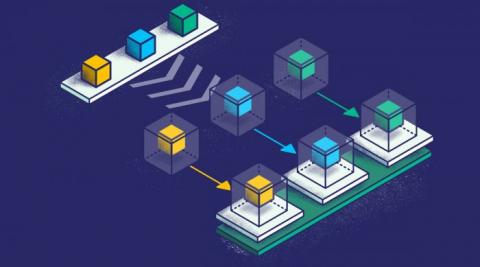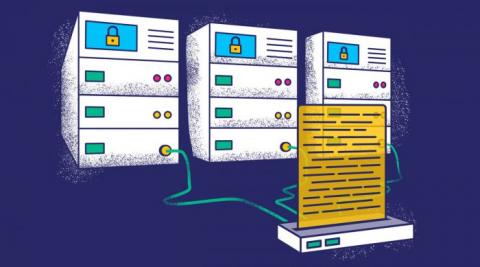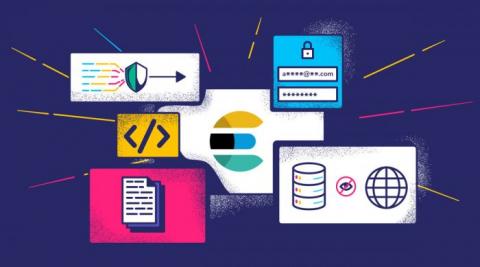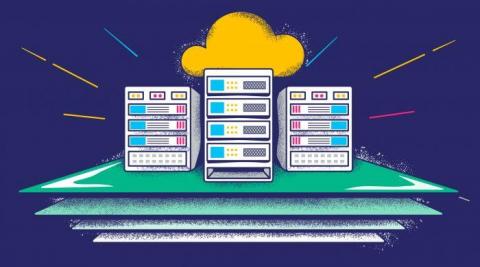Security | Threat Detection | Cyberattacks | DevSecOps | Compliance
Coralogix
Network Security: The Journey from Chewiness to Zero Trust Networking
Network security has changed a lot over the years, it had to. From wide open infrastructures to tightly controlled environments, the standard practices of network security have grown more and more sophisticated. This post will take us back in time to look at the journey that a typical network has been on over the past 15+ years. From a wide open, “chewy” network, all the way to zero trust networking. Let’s get started.
Stop Enforcing Security Standards. Start Implementing Policies.
In days gone by, highly regulated industries like pharmaceuticals and finance were the biggest targets for nefarious cyber actors, due to the financial resources at banks and drug companies’ disposal – their respective security standards were indicative of this. Verizon reports in 2020 that, whilst banks and pharma companies account for 25% of major data breaches, big tech, and supply chain are increasingly at risk.
5 Common Elasticsearch Mistakes That Lead to Data Breaches
Avon and Family Tree aren’t companies you would normally associate with cybersecurity, but this year, all three were on the wrong side of it when they suffered massive data breaches. At Avon 19 million records were leaked, and Family Tree had 25GB of data compromised. What do they have in common? All of them were using Elasticsearch databases. These are just the latest in a string of high profile breaches that have made Elasticsearch notorious in cybersecurity.
PCI Logging Rules Your Organization NEEDS to Know
For an organization to be compliant with PCI logging requirements, it must follow PCI Requirement 10 of the Payment Card Industry Data Security Standards (PCI DSS). Below, we’ve listed the highlights of this section and the important details that you need to know.
SIEM Tutorial: What should a good SIEM Provider do for you?
Modern day Security Information and Event Management (SIEM) tooling enterprise security technology combine systems together for a comprehensive view of IT security. This can be tricky, so we’ve put together a simple SIEM tutorial to help you understand what a great SIEM provider will do for you. A SIEM’s responsibility is to collect, store, analyze, investigate and report on log and other data for incident response, forensics and regulatory compliance purposes.
Elasticsearch Vulnerability: How to Remediate the most recent Issues
An Elastic Security Advisory (ESA) is a notice from Elastic to its users of a new Elasticsearch vulnerability. The vendor assigns both a CVE and an ESA identifier to each advisory along with a summary and remediation details. When Elastic receives an issue, they evaluate it and, if the vendor decides it is a vulnerability, work to fix it before releasing a remediation in a timeframe that matches the severity.
Strategically Managing Cloud Resources for Security, Fun, and Profit
The first time I created a cloud compute instance, then still called a “Cloud VM”, was an almost transcendent moment. It was like magic. I was at my first organization which had adopted the cloud, in my first DevOps position, and I immediately knew that the world had changed.
The Cloud Network Security Gap
Before we dive into the gap in cloud network security, let’s take a step back. If you’ve been in Operations for a while, you might remember how it used to be. “Network” was a team. When you needed to open a port on the network, you had to provide an exhaustive definition of the change, explaining what port you needed, what external addresses should be able to reach it, and where it should be routed to internally.
Writing Effective Snort Rules with Examples [Best Practices]
This post will help you write effective Snort Rules to materially improve your security posture. We’ll begin with a breakdown of how a Rule is constructed and then explore best practices with examples in order to capture as many malicious activities as possible while using as few rules as possible. Snort is an open-source network intrusion detection system (NIDS) that provides real-time packet analysis and is part of the Coralogix STA solution.











